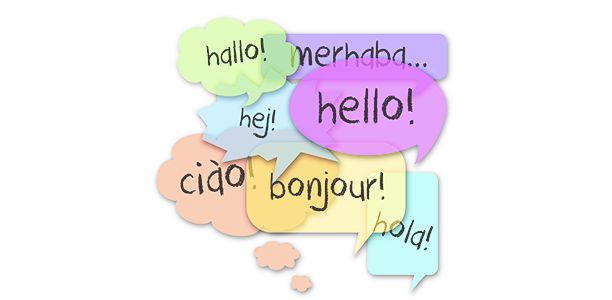It’s never too early to start teaching your child a second language, in fact the younger they start learning, the more easily children seem to learn to speak another language. But there’s more to being bilingual than knowing how to speak. Children also need to learn to read and write their second language.
Multilingual resources like flashcards and alphabet trains help parents encourage and improve their children’s second language learning. They can be used with young children who are just starting to learn their alphabet or older children who are already competent readers in their first language. The same principles apply for English speaking parents teaching their children another language, as to non-English speaking parents teaching their child English.
How do children learn a second language?
Children acquire their second language in essentially the same way as they acquire their first- they start listening to those around them speak the language, then start talking and later learn about the alphabet, reading and writing.
If you are teaching your child to speak a second language, sooner or later they’ll want to start reading in that language as well. Children who already know how to read in their first language often show interest in learning to read another language they are learning. And in order to do that effectively, they need to learn the alphabet, in French, Spanish or whatever language they are learning.
How can we help children learn a second language
While many children learn more than one language many do it without being actively taught (e.g. because they grow up in a family that speaks more than one language), not much research has been done to identify the best strategies for teaching children more than one language. For example should teaching focus on improving their primary language before a second language or should both languages be taught simultaneously?
What is known is that children read better in their second language, if they are taught to read in their first language. So for example a child who speaks Spanish at home but English at school will learn to read better in English if they are also taught to read in Spanish. This is probably because they are able to transfer the skills from the first language (e.g. how to change letters into sounds). Children are even able to transfer these skills to languages with different alphabets. There is some concern that young children who learn two languages may forget one if they are not encouraged to continue learning both languages. For example they may forget their first language if they adopt a second language at school and with friends, and receive little formal teaching in their first language.
In general the same principles that apply to teaching a first language, apply to teaching a second. Children begin by learning to speak words by listening to others say them. But they also need explicit instruction to properly understand things like phonics (the sounds made by different letters in different combinations), grammar and reading, and to expand their vocabulary. The strategy will differ depending on how well your child speaks, reads and write in their first language. For example older children who are already reading in their first language will require a different style of teaching to young children who are still learning their first alphabet.
Teaching a second language alphabet
The ability to hear and work with the individual sounds in the words we speak and associate them with alphabetic characters used to represent those sounds when we write, is fundamental to reading and writing. However the alphabetic system of each language differs. For example different languages use some different characters in their alphabet and some use a completely different set of  alphabetic characters for written language. Even alphabets which use the same characters (e.g. a, b,c ,d) often have different letter sounds (e.g. ch is pronounced sh in French compared to English).
alphabetic characters for written language. Even alphabets which use the same characters (e.g. a, b,c ,d) often have different letter sounds (e.g. ch is pronounced sh in French compared to English).
So it’s important to provide children specific instruction in the letters and sounds of their second language alphabet. Children as young as five years learning a second language improve their reading and spelling ability when they are taught the individual sounds of each letter of the alphabet and the sounds letters make in different combinations.
How long will teaching a second language take?
Children typically take six years to learn to speak a language fluently, with active instruction, for example learning at school.
Tips for parents
- Set aside a special time of day (or at least a separate time) for learning the second language, rather than combining it, for example with activities in the first language. For example set aside a time in the afternoon to do second language learning, like practising the alphabet of their second language using an alphabet animal train or learning the names of different forms of transport while doing flashcard activities.
- Remember, teaching your child a second language is about balancing time for active learning with flashcards and other activities, and providing them opportunities to hear and speak the language in everyday situations.
Multilingual Resources
Multilingual Toy Labels – Tidying up Activity
Alphabet Train Poster Download
- English
- French
- German
- Italian
- Spanish
References
- British Council. How young children learn English as another language. Undated. (cited 26 August 2014). Available from: (URL Link)
- Stuart M. Getting ready for reading: Early phoneme awareness and phonics teaching improves reading and spelling in inner-city second language learners. Educational Psychology. 1999. 69; 4: 587-605. Abstract: (URL Link)
- Goldenburg C. Teaching English Language Learners- What the Research does- and does not- say. American Educator. 2008. Available from: (URL Link)
- Clark BA. First- and Second- Language Acquisition in Early Childhood. Early Childhood and Parenting Collaborative- University of Illinois. 2002. (cited 26 August 2014) Available from: (URL Link)
- Felton R. Teacher letter-sound association. Arizona Department of Education. 2011. (Cited 23 June 2014). Available from: (URL Link)



 (7 votes, average: 4.00 out of 5)
(7 votes, average: 4.00 out of 5) 









